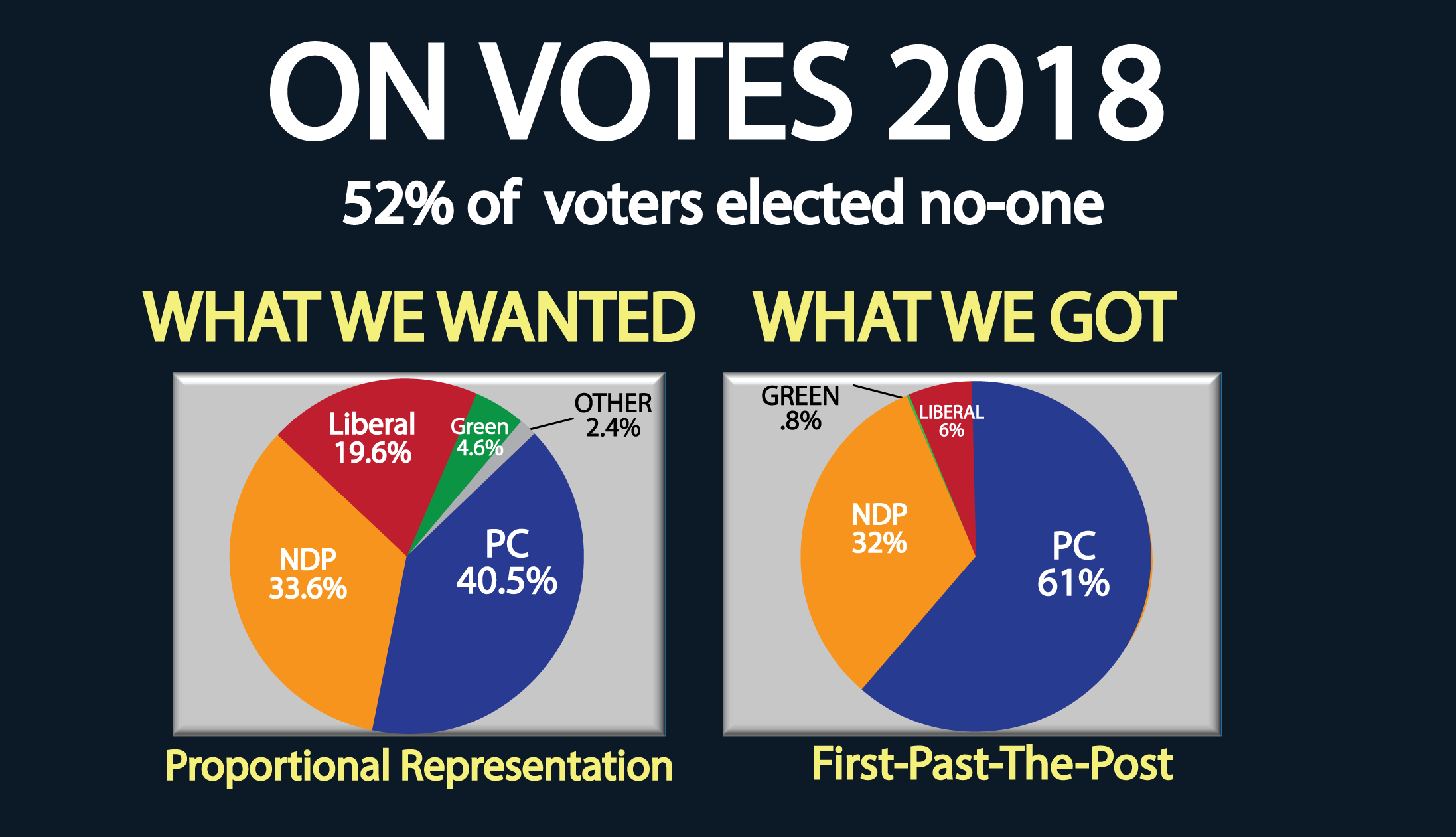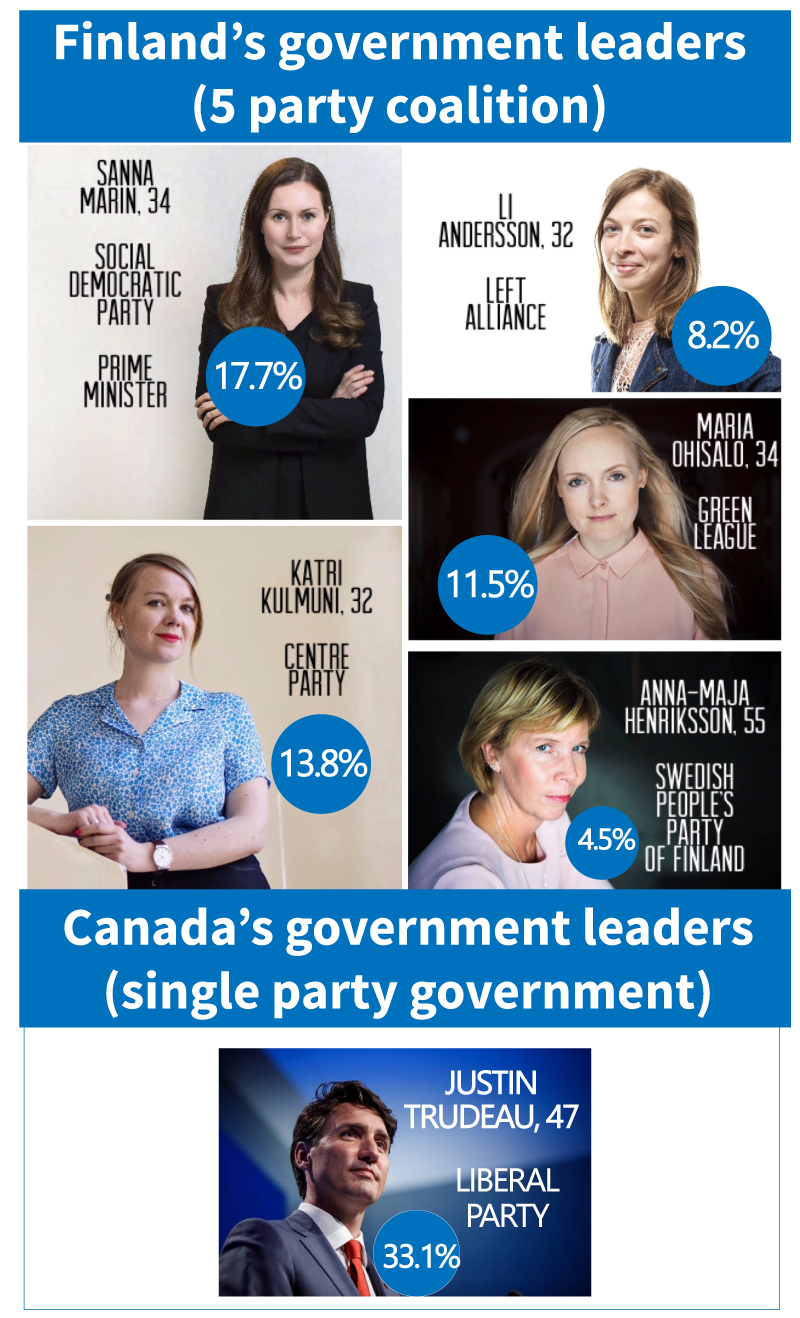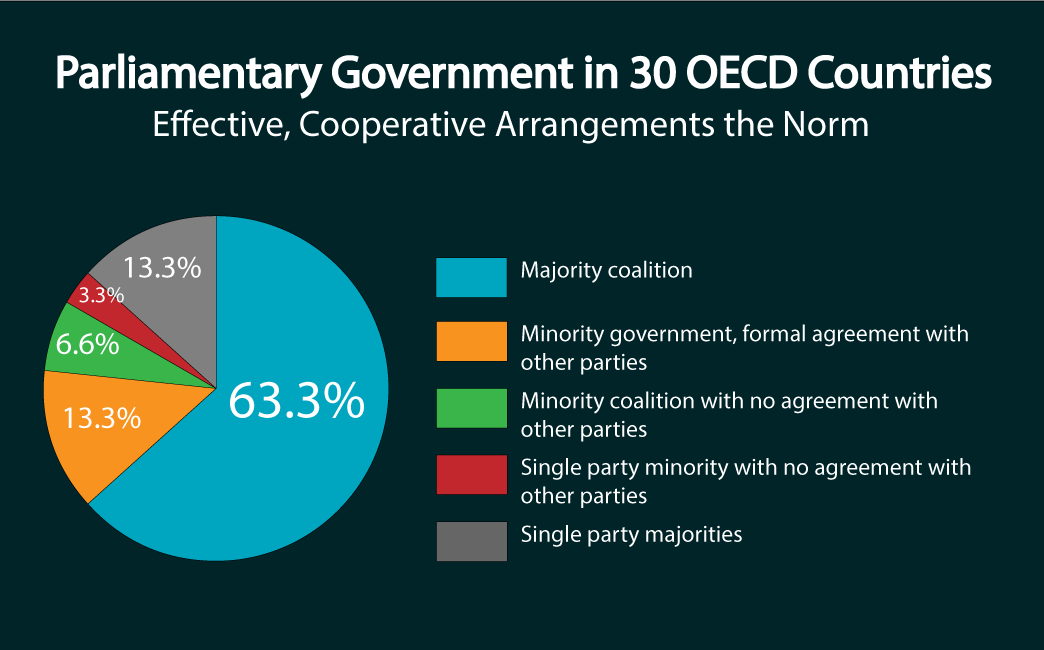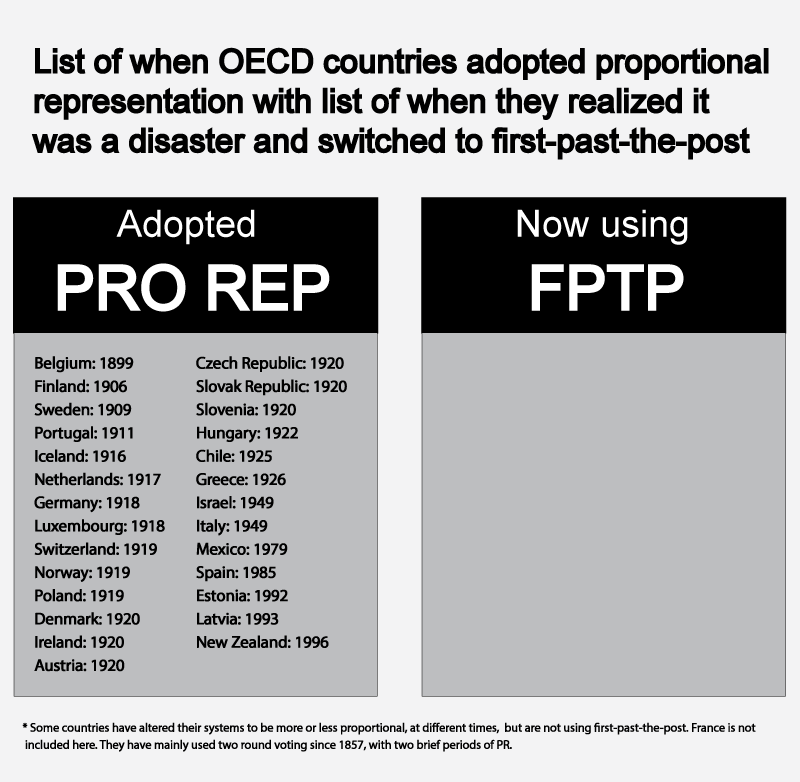More problems with first past the post in Canada
For an explanation of first past the post, and the basic problems it creates in terms of distorted election results, please read “What is first past the post?” before this page!
 Since WW2, at the federal level, we’ve only had 4 majority governments elected by a majority of voters. The last one was in 1984.
Since WW2, at the federal level, we’ve only had 4 majority governments elected by a majority of voters. The last one was in 1984.
After almost every election, the majority of voters have NO SAY in government decision making.
With one party having 100% of the power, it often appears that the government is run by one person and some backroom party strategists.
The image below illustrates a typical result.
For a closer look at how first past the post distorts the results across the country, see What is first past the post?


Many voters feel they must vote for a candidate who is not their first choice – “the lesser evil” – to prevent a party they don’t support from gaining power.
A strategic vote is most often for one of the larger parties, masking diversity and the real support for the smaller parties in the election results.
Even when an organized strategic voting campaign does succeed in shifting the vote in the desired direction, many voters are left with the feeling that the government or MP they elected by strategic voting was not what they really wanted.
With proportional representation, you vote for what you truly believe in, and help elect an MP who shares your values!

With first past the post, elections are focused on a handful of ridings where two (or occasionally three) parties are in a “tight race”. A few thousand voters in a dozen “swing ridings” can mean the difference between a majority government or opposition status.
Parties focus a disproportionate amount of their time and effort trying to sway a handful of voters in these ridings.
Many other voters live in “safe seats” – seats where the same party could run a lamp post and win. In these ridings, voters are almost certain of the outcome before the election is even called. Parties spend very little effort to reach voters in these ridings. The leader’s tour bus does not stop here. These voters are ignored.
If one does not support the dominant party in a “safe seat” riding, voting can feel especially futile. Parties which never win the riding may have trouble finding quality candidates to run.
With proportional representation, no matter what party you support or where you live, your vote counts. Politicians know they must pay attention to every voter and every riding!

Politics is overly adversarial, cooperation is rare.
When every riding is a one-winner, zero-sum game, parties competing for the same voter are likely to sling mud. This kind of hyper-partisan politics turns many voters off.
In the legislature, there’s little incentive to praise or even acknowledge the good ideas of another party.
When one party has 100% of the power with 39% of the vote, there’s no need to take anyone else’s views into account – even when voters want them to do just that
Even in a minority government, the governing party’s strategy involves watching the polls for the right moment to trigger an election, hoping a few swing votes will produce a majority government.
In contrast, in most western industrialized democracies, cooperative governments are the norm. (See images below – Finland’s government 2022 and OECD overall).
With proportional representation, parties must work together. Cooperation between parties in a coalition or other cooperative agreement – shared credit and shared accountability – becomes the norm. Politics is more civil.
With each riding or region electing multiple MPs, rather than just one winner, each party seeks to maximize its own seat count without tearing down its allies.



Tackling long term challenges requires cooperation between parties and long term thinking. Winner-take-all electoral systems produce frequent “policy lurch” – where one government elected with less than half the votes reverses the policies of the previous government. Cyclic reversals of legislation, dismantling regulations and cancelling programs related to any policy area is economically wasteful. Over time, we move back and forth, instead of forward. Proportional representation means that parties must work together to create policy – so every policy has the support of parties representing a real majority of voters. These policies are much more likely to last through changes of government.
First past the post is an archaic system. Most of the world has moved on.
Canada is stuck with a horse-and-buggy electoral system that most countries ditched long ago.
Most western democracies – our peers – use proportional systems. Canada, the U.S. and the UK are the last countries hanging on to first past the post, and even the UK’s devolved assemblies (Ireland, Scotland and Wales) use proportional systems. (See image below).
During the 2016 federal Electoral Reform Committee hearings, 88% of the experts who testified were in favour of proportional representation. First past the post was supported by almost no-one – except the big party incumbent politicians!
Around the world, the trend is towards proportional voting systems that give voters fair results, and more choice. No-one is adopting first past the post.

